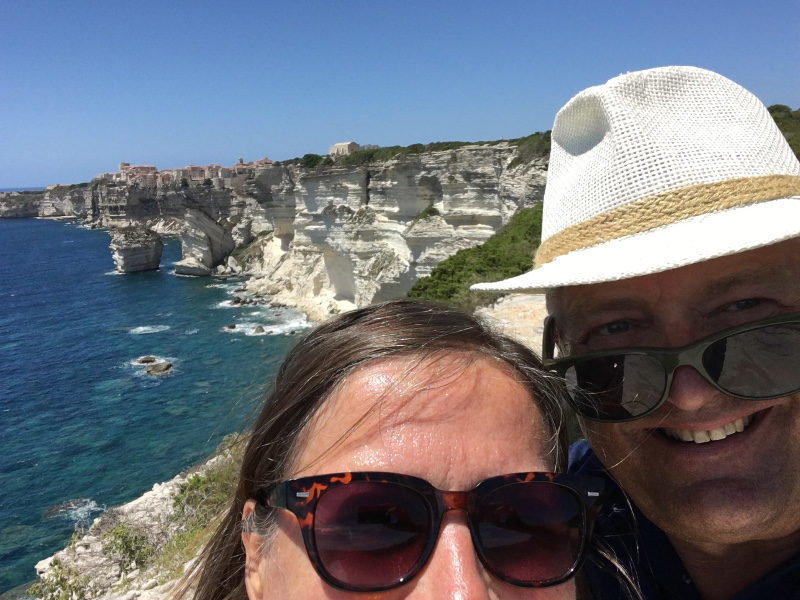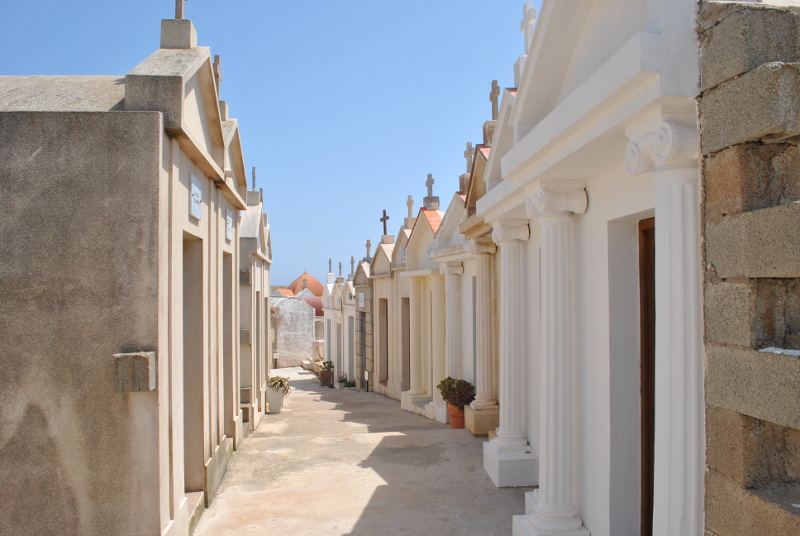
In the wake of Odysseus we sail into the world’s most spectacular natural harbour
only 41° 23′ 17.754” N 9° 9′ 44.3304” E
Sunday 25 June to Friday 30 June
A dream of a sailing day. Again. We hoist the sails, as we leave Propriano, and only take them down again eight hours later, when we arrive in Bonifacio, the southernmost of Corsica’s major cities. A whole day by sail. It doesn’t get much better than that.
Bonifacio is one of the most spectacular and extraordinary harbours, we have ever sailed into. You sail through a small opening in the rocks of the coast, turning immediately to the right and suddenly you find yourself at the beginning of a 1.8 kilometer long calanque or fjord, that runs parallel to the coast but without being visible from the sea, as there are massive rocks between the sea and the harbour.

A miracle of a natural harbour. It’s big, lively, dramatic – something is happening at all times.
It is a natural harbour as if cut by supernatural forces right through the chalk cliffs. It’s hard to describe. It has to be seen. Vertical chalk cliffs on each side of the harbour entrance. Half of the calanque is used as a port, it seems Bonifacio is a favorite springboard for sailors heading from Italy, Sardinia and to the north. And from mainland France through Corsica and to the south.
Historians have identified Bonifacio as the port, that Homer mentions as the port of Laestrygonies in the Odyssey. The port where Odysseus anchored with his his fleet and only barely escaped with enormous losses, when the Laestrygonies set off to drive Odysseus and his people away.
We did not let them drive us away. We stayed for five days. Partly due to weather reports of severe winds from west. But also because we liked the city and its surroundings. There are hiking trails inland and along the sea. Beautiful, healthy and moderately challenging.

Spectacular? Old Bonifacio looks like a village constantly at the risk of falling down into the ocean. It has looked like this for centuries.
Bonifacio is admitted to UNESCO’s conservation list, so it’s not a city you have to yourself. It’s crowded with tourists, there is a light show on the walls of the fortress, and in the early night disco rhythms are pounding throughout the harbour, and may make some sailors grab for their ear plugs.
Every day a new armada of holiday-loving Italian sailors arrive. Their summer vacation has started. They have rented a sailing boat. Now it is time for action. Many of them have a practice where, when they have picked up the mooring lines from the bottom of the harbour, they fix it to their boat, put the engine at full power back, in order to get their mooring lines maximum tight, and then they make the boat firm to the quay.
This is certainly good for the boat in question, but on either side two to three other boats hammer their stern into the quay, because their lines have become too loose, after the newly arrived boat has pulled the common anchor chain on the bottom of the harbour closer to the dock. Damn it! They think it’s their own personal anchor. It’s not. We are all collectively linked to the same key anchor chain!
The skipper’s wife happily enters the cabin and declares that the new neighbors are VERY noble and considerate, and that they have told her, that if she can’t wake up the skipper from his siesta, they will be happy to come over and assist, if we have failed to tighten our own moorings properly. Sigh!
Bonus info: Bonifacio has two supermarkets directly on the quayside. Helpful people at the harbour office. Beware of strong westerly winds. The natural harbour intensify the wind as in a funnel, which can make it difficult to maneuver.

The graveyard at the old Bonifacio on top of the cliff. It gives you an insight into the differences between the southern european catholic culture, and the more pragmatic culture of the northerns, when it comes to the attitude towards the dead.